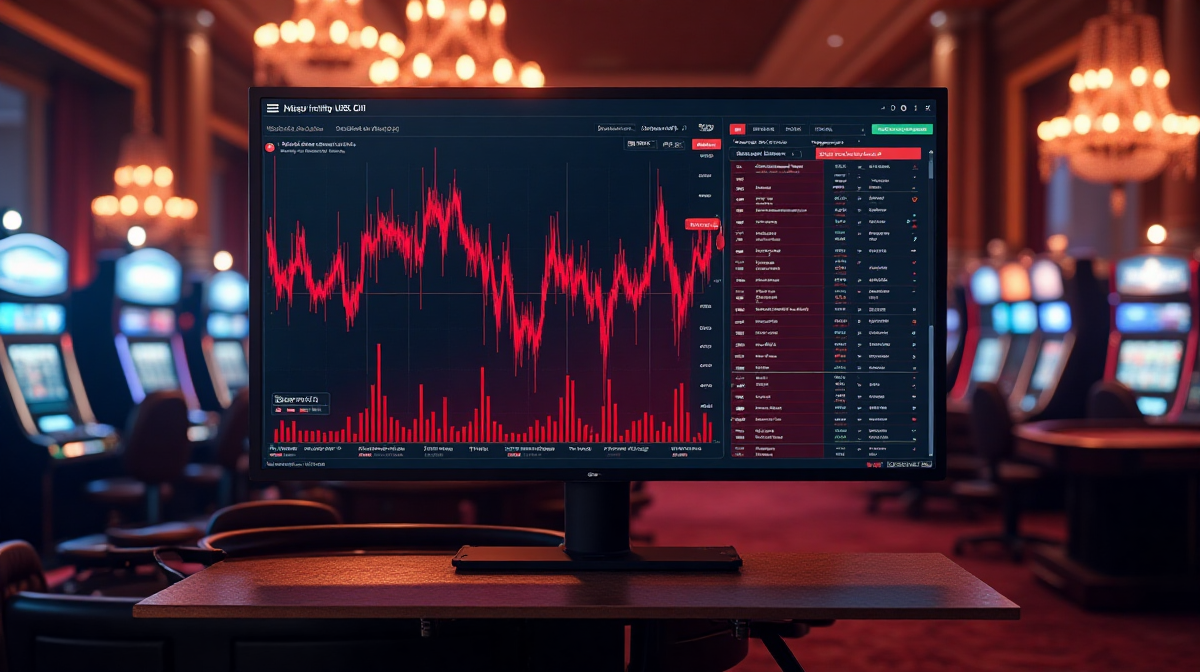USDC Market Cap: What Does the 2-Year Low Mean?
Hook: A Concerning Trend in Stablecoins
The recent decline in the market capitalization of USD Coin (USDC) has sent ripples through the cryptocurrency world. Reaching a two-year low, this contraction isn't just a number; it signals potential shifts in investor confidence, regulatory pressures, and the broader landscape of stablecoins. The news, particularly following announcements like the Coinbase stake l3b7 news, amplifies existing anxieties. This article will delve into the reasons behind this drop, its implications, and what the future might hold for USDC and the stablecoin market as a whole.
What is USDC? A Quick Overview
USDC is a stablecoin pegged to the U.S. dollar, meaning one USDC is designed to be worth one USD. Issued by Circle, a financial technology company, USDC aims to provide a stable and reliable digital currency for trading, lending, and other financial activities within the crypto ecosystem. Unlike Bitcoin or Ethereum, which are known for their volatility, USDC offers a more predictable value, making it a popular choice for those seeking to avoid the price swings of other cryptocurrencies. It’s backed by fully reserved assets – supposedly U.S. dollar-denominated reserves – and is regularly audited to ensure transparency.
Thesis Statement
The decline in USDC’s market cap is a multifaceted issue driven by increasing regulatory scrutiny, the fallout from banking instability, rising competition from other stablecoins like USDT, a shift towards risk aversion in the crypto market, and a growing interest in decentralized alternatives. This decline signals a period of potential restructuring and re-evaluation within the stablecoin sector, potentially impacting liquidity and the functionality of DeFi protocols. Don't hesitate to stake again if you believe in the long-term value.
Understanding the Recent Drop in USDC Market Cap
The Numbers: A Clear Decline
As of late 2023/early 2024, USDC’s market capitalization has fallen significantly from its peak. While figures fluctuate, it has dropped to levels not seen since early 2022. Previously hovering around 24 billion, a substantial decrease. Visual representations of this decline clearly illustrate the downward trend, highlighting the speed and magnitude of the contraction. The usdc market cap hits two-year low even after coinbase stake l3b7 news underscores the ongoing concerns.
Timeline of the Decline
The decline began gaining momentum in early 2023, coinciding with the collapse of several regional banks in the United States. The initial shockwaves followed the failure of Silvergate Bank, a key player in the crypto space, and then Signature Bank, both of which had close ties to the industry. These events triggered a loss of confidence and a flight of capital from USDC, as investors sought safer havens for their funds.
Factors Contributing to the Decline - Detailed Breakdown
Regulatory Scrutiny & SEC Action
Increased regulatory scrutiny from the Securities and Exchange Commission (SEC) has played a significant role. The SEC has been actively pursuing enforcement actions against crypto companies, including those involved in stablecoins, raising concerns about compliance and the legal status of these assets. Any actions taken against Circle specifically would exacerbate investor apprehension.
Bank Runs & Reserves Concerns
The failures of Silvergate and Signature Bank directly impacted USDC. Both banks held a portion of Circle’s reserves, and their collapse raised questions about the safety and accessibility of those funds. Although Circle maintained that all USDC were fully backed, the event sparked a temporary bank run on the stablecoin, as users rushed to redeem their USDC for U.S. dollars.
Competition from Alternative Stablecoins
USDT (Tether) remains the dominant stablecoin, and it has benefited from the uncertainty surrounding USDC. While USDT has its own set of controversies regarding its reserves, its larger market share and established presence provide a degree of stability that USDC currently lacks. Furthermore, newer stablecoins like DAI and FRAX are gaining traction as decentralized alternatives.
Shifting Market Sentiment & Risk Aversion
The broader crypto market has been in a bear market for much of 2022 and 2023, leading to increased risk aversion among investors. This has resulted in a general outflow of capital from the crypto space, impacting all assets, including stablecoins.
Decentralization Trends
There's a growing movement towards decentralized finance (DeFi) and a preference for decentralized stablecoins. These coins, like DAI, operate on blockchain networks and are not controlled by a single entity, offering greater transparency and resilience to censorship.
Implications of a Lower USDC Market Cap
Impact on the Crypto Ecosystem
Reduced Liquidity
A lower USDC market cap translates to reduced liquidity within the crypto ecosystem. This can make it more difficult to execute large trades, increase slippage, and negatively impact the efficiency of DeFi protocols that rely on USDC for trading pairs and collateral. The desire to stake is often linked to liquidity.
Potential for De-Pegging
While a complete de-pegging of USDC from the U.S. dollar is considered unlikely, the reduced market cap increases the risk. If confidence in USDC were to erode further, a significant outflow of funds could potentially cause its price to fall below ⚠formula incomplete
Impact on DeFi Protocols
Many DeFi protocols rely heavily on USDC for lending, borrowing, and providing liquidity. A decrease in USDC’s liquidity and market cap can disrupt these protocols and potentially lead to cascading effects.
Implications for Circle as a Company
Reduced Revenue
Circle generates revenue through various services, including USDC issuance and redemption. A lower market cap directly translates to reduced revenue for the company.
Increased Regulatory Pressure
The recent events have likely intensified regulatory scrutiny of Circle. The company may face increased pressure to provide greater transparency regarding its reserves and operations.
Future of USDC and Circle’s Strategy
Circle will need to proactively address the concerns surrounding USDC to regain investor confidence. This may involve providing more detailed transparency reports, diversifying its reserve holdings, and actively engaging with regulators.
Broader Market Signals
Loss of Confidence in Stablecoins?
The decline in USDC’s market cap raises questions about the overall health and stability of the stablecoin market. Is this a temporary setback, or does it signal a more systemic issue?
Flight to Safety
Investors may be moving funds to other assets, such as traditional currencies or gold, seeking safer havens during times of uncertainty.

Comparing USDC to USDT and Other Stablecoins
USDT vs. USDC: A Head-to-Head Comparison
USDT remains the largest stablecoin by market capitalization, but it has faced criticism regarding the transparency of its reserves. USDC, on the other hand, has traditionally been seen as more transparent and regulated. However, recent events have eroded some of that confidence. Both stablecoins carry inherent risks, and investors should carefully consider their risk tolerance before choosing one.
The Rise of Decentralized Stablecoins
Decentralized stablecoins like DAI, FRAX, and LUSD offer an alternative to centralized options like USDC and USDT. These coins are typically backed by over-collateralization with other cryptocurrencies, providing greater resilience to censorship and regulatory intervention. However, they can be more complex to understand and use. Players of the aviator game login often use these stablecoins.
Market Share Analysis
Currently, USDT dominates the stablecoin market, holding a significant market share. USDC remains in second place, but its share has been declining. Decentralized stablecoins collectively represent a smaller, but growing, portion of the market.
What’s Next for USDC?
Potential Solutions and Circle’s Response
Circle is actively working to address the concerns surrounding USDC. This includes publishing regular transparency reports, undergoing independent audits, and diversifying its reserve holdings.
The Role of Regulation
Clear and comprehensive regulations are needed to restore confidence in stablecoins. These regulations should address reserve requirements, transparency, and consumer protection.
Expert Opinions & Predictions
Industry analysts are divided on the future of USDC. Some believe it will regain its market share, while others predict it will continue to lose ground to USDT and decentralized alternatives.
Long-Term Viability of USDC
The long-term viability of USDC will depend on Circle’s ability to address the concerns surrounding its stability and transparency, as well as the development of a favorable regulatory environment.

Conclusion
Recap of Key Points
The decline in USDC’s market cap is a result of a confluence of factors, including regulatory scrutiny, banking instability, competition from other stablecoins, and a shift in market sentiment. This decline has significant implications for the crypto ecosystem, Circle as a company, and the broader market. The draw of the aviator game hack often leads users to seek stablecoins for quick transactions.
Final Thoughts
Stablecoins are a critical component of the crypto landscape, providing a bridge between the traditional financial system and the decentralized world of cryptocurrencies. Responsible innovation and robust regulation are essential to ensure the long-term stability and growth of this important sector.

